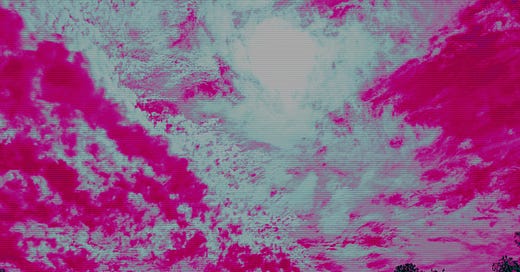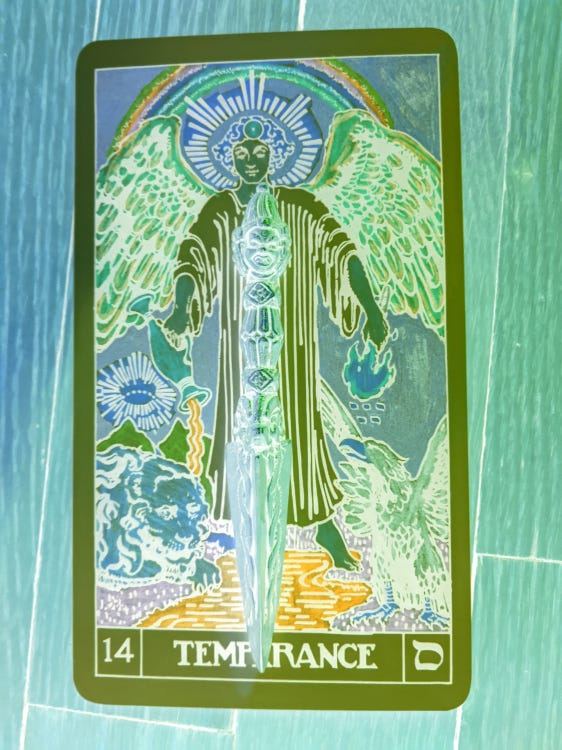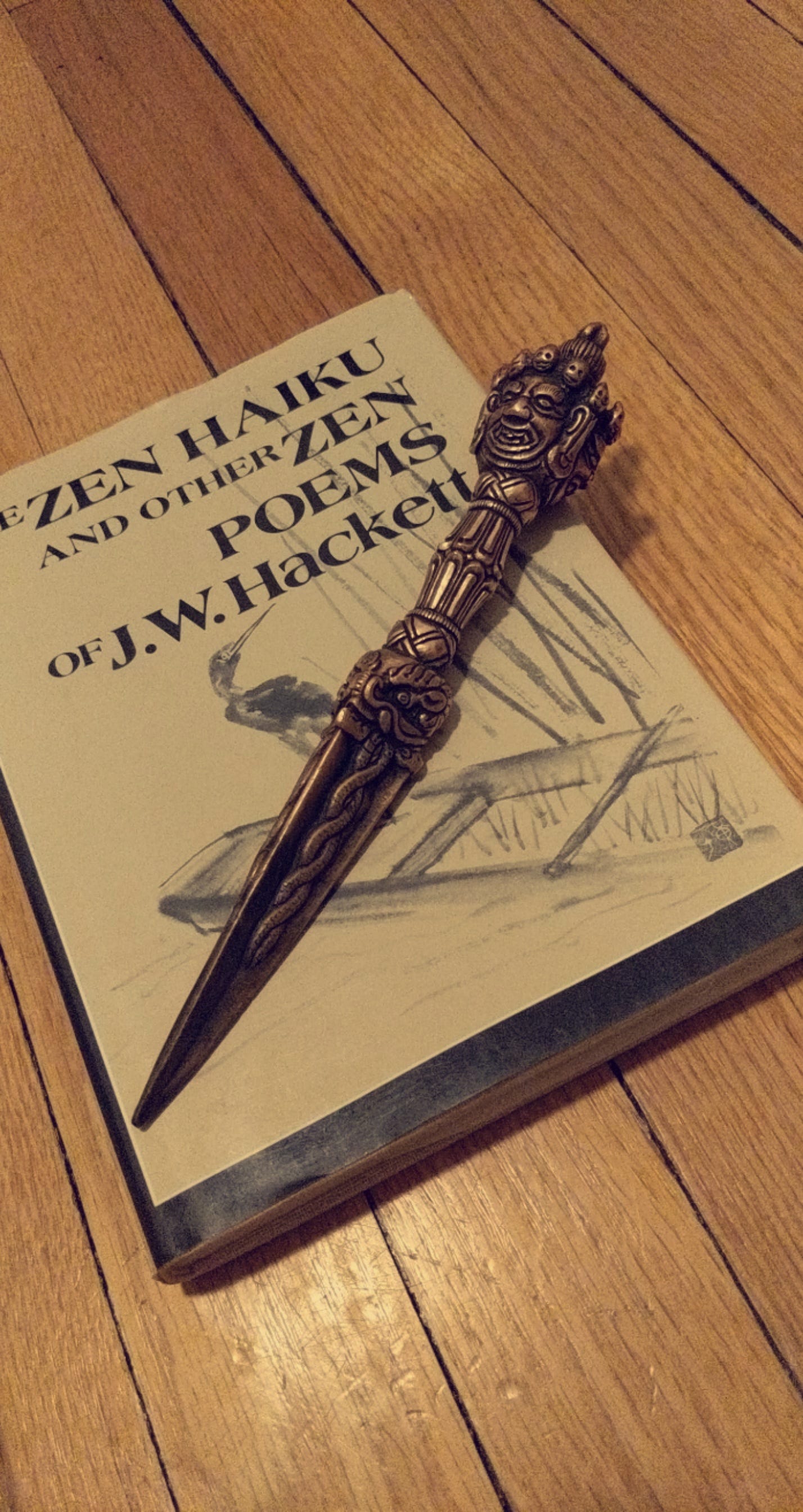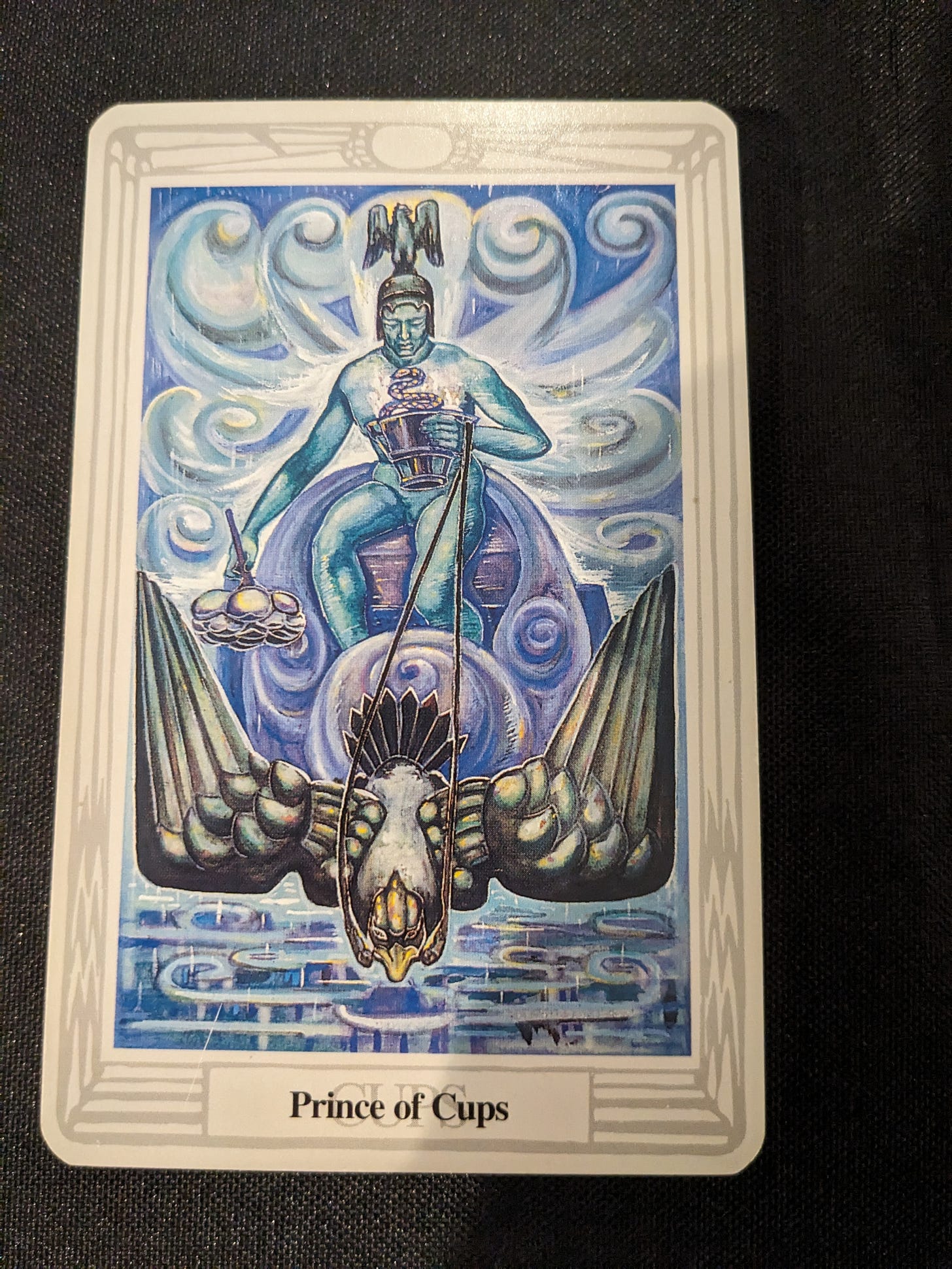Welcome to Chapter 31 of Inner Tarot Revolution. This is going to be a fun chapter, because it includes one of the cards I have been most looking forward to covering: Atu XIV: Art, which is the Thoth tarot’s version of the Temperance card. This card has long been one of my favorites, and it has deep ties to the Word of Hermekate, which I’ll explore in greater detail in the section dedicated to the card.
Things have been personally rough lately. In Chapter 30, I alluded to the fact that often, when I begin to break into a new level of success connected with Hermekate, I find myself backtracking or self-sabotaging. This week, I spent some time confronting one of the main reasons for that: “the Social Media Problem.” It’s not the only problem, but it’s key.
In the last week, I “celebrated” my birthday. I put that word in quotation marks because I rarely view my birthday as cause for celebration. Instead, my birthday tends to be something I “get through.” This year was even more difficult than usual because of the symbolic weight of the year in question:
This year, I turned 41.
Many people view 40 as a milestone, and it’s not always a welcome one. 40 is often recognized as officially “over the hill;” once you turn 40, you can actually start calling yourself “old.” However, I contest this: I think the real “over-the-hill” year is 41. 40 is more like the very “top” of the hill. While you’re still 40, you’re still in kind of a liminal space; once you turn 41, you have truly begun the “downhill” journey alluded to by the phrase “over the hill.”
Now, I know that’s just a point of view, and it’s a fairly limited one. Hell, I started “feeling old” in my 20s, and people my parents’ age at the time would tell me I was still a baby, and I thought they were nuts. Now, I’m not even as old as they were then, and yes: I think 20 year-olds are babies. So of course, to someone in their 60s, my current notions about the grim finality of turning 41 would probably look overblown. It’s all relative, right? And a more optimistic viewpoint holds that no matter what your age, it’s technically always true: You have your whole life ahead of you. If I hit life expectancy—which looks like it hovers around 77 years old at present—then I was halfway done a couple years ago, and all this tension surrounding this symbolic milestone is completely socially constructed.
Anyhow, on the eve of my birthday, I was feeling a certain kind of way about it, about the rest of my life, and by extension, about my work involving Hermekate. A lot of my existential questioning that night stemmed from a social risk I had just taken: After lurking there for a couple of weeks, I finally shared my post Song of Hermekate in a group connected with Horus-Maat Lodge to see what the response would be, and the result was…anti-climactic. I also totally saw the “result” coming and was completely unsurprised by it, but still managed to be utterly disappointed nonetheless. In short, while the concept of the “Song” arose in my mind independently of the ideas promulgated by HML, I also see a lot of resonance between Songs and the concept of N’Aton with which HML works so closely; honestly, for the longest time, I deeply doubted the concept of Songs as an eventual “replacement” for the paradigm of the Word because of the fact that the concept of Songs is only viable insofar as people are able to consciously participate in their co-creation.
In short, a Song is a principle analogous to a Word, only one that manifests through more than one person at a time. However, if you understand what a Word is to the Magus who utters it, it’s difficult to see how that same concept could apply to entire groups of people…unless, somehow, the individual consciousness of each of those involved were to “overlap” in such a way that the understanding of the parts were to be truly shared at the level of the whole. In order for this to happen, all involved in the “singing” of a Song would theoretically have to be at the level of Magus, or perhaps Magister Templi at the very least. Based on most available writings, it’s pretty rare for people to develop to the level of such grades, especially if you buy into what most esoteric orders are selling and believe it’s actually necessary to jump through their hoops in order to grow to those levels.
But what if you don’t? What if “Magisters Templi” are far more common than they seem, but when a lot of people reach that level in their personal work, they just don’t go around barking about it? Or maybe they don’t even recognize it in such terms at all because they really don’t read up on stuff like Initiatory grades? Such a state of affairs seems more likely in the Ma’at current, which is much less focused on the individual aims of egotists.
And indeed, I found, upon studying Nema’s commentary to Liber Pennae Praenumbra, that this is pretty much taken as a given:
The reality of the Abyss, the ‘crossing’ of which is a prerequisite of Maat-consciousness, is more textured than the term would imply.
From “The Giving of the Word”
Beta
A Comment on Communications From the Aeon of Maat
On the one hand, this was great news for me: One of the major sources of doubt I’ve had regarding the concepts comprising the Word of Hermekate has been that it’s all predicated on the upper grades becoming more commonplace, and here, Nema is saying essentially the same thing in stating that crossing the Abyss is a prerequisite for full participation in Ma’at-consciousness. We’re on the same page. Great!
On the other hand, it also means that just maybe, the Word of Hermekate and its postulates aren’t anywhere near as “revolutionary” as I once thought they were.
And, wait a minute…if that’s true…then what am I even doing? If all these people are out there already doing the thing my Word advocates (i.e., working independently and developing along lines that were once gatekept by megalomaniacs building magic(k)al orders and making arbitrary hierarchies out of this stuff), then why does it even need to be spelled out this way? If my Word isn’t bringing anything truly unique into being, then is it really a Word at all?
Am I doing anything other than reinventing the wheel over here?
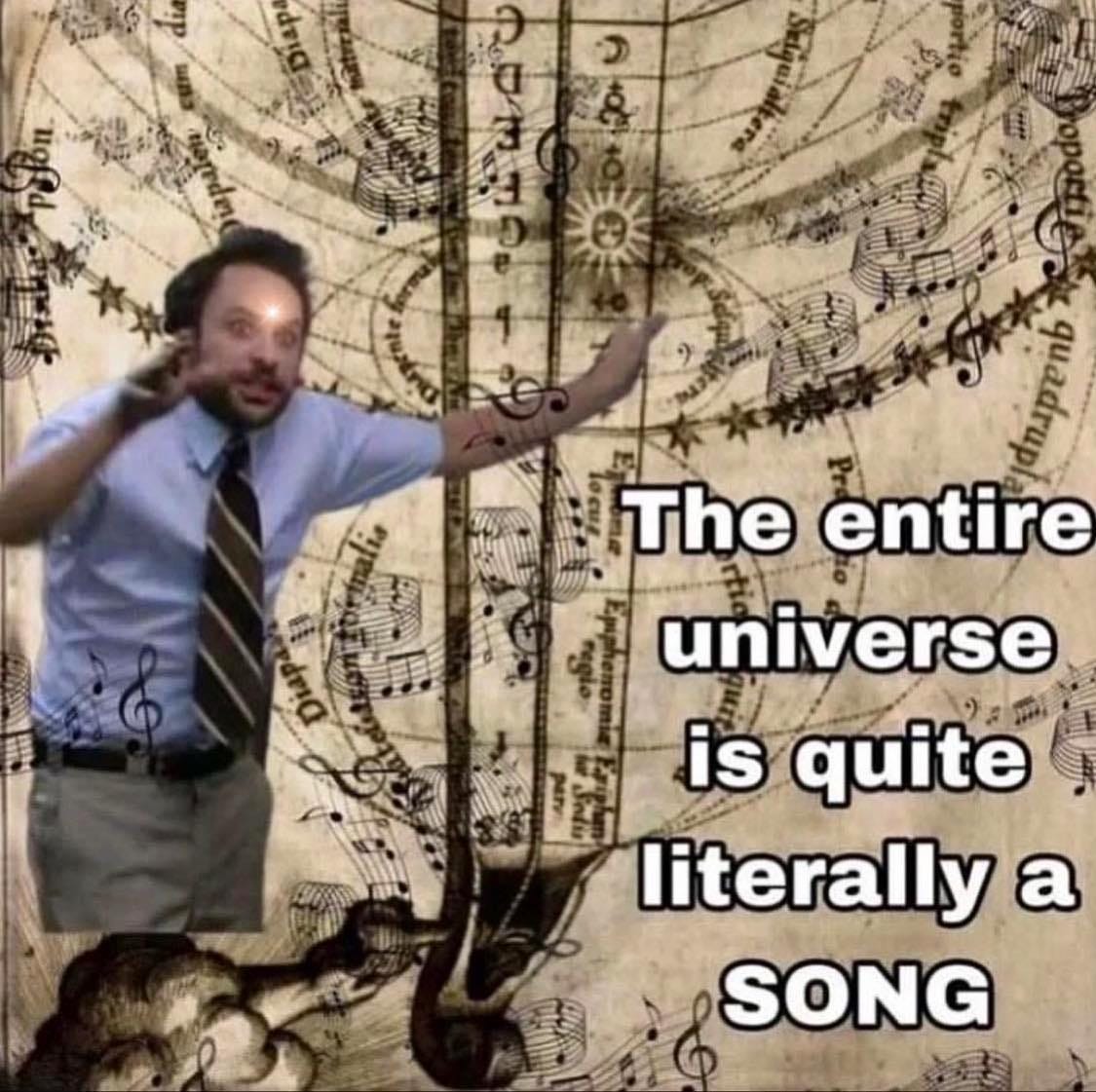
This was a blow to my ego, I have to admit (just because I talk a lot of shit about people even more egotistical than me doesn’t mean I don’t struggle with the same thing), but it was a welcome one in a sense. That’s what working with the Ma’at current is all about, right? Besides, if there’s this much overlap between my own ideas and what others are doing, that also sort of proves the point behind the concept of the Song, doesn’t it? It’s kind of paradoxical, but if there’s so much common ground that my Word covers in tandem with existing Words such as IPSOS, that fact in and of itself essentially supports what both Words are saying, doesn’t it?
So maybe I was overthinking all of this…and that, in a nutshell is the very essence of why Words are so troublesome to begin with.
Still, I couldn’t help but remain painfully aware that in a sense, my work is really only relevant to a relatively limited demographic: I have strong chaos magic(k) roots myself, so I am well aware that there are literal hordes of magicians out there already doing their own thing, and many of them are so “above” this hierarchical occult bullshit that they don’t even want to bother reading Crowley or participating in paradigms like “Words” and Initiatory hierarchies at all. Again: My ideas would largely be preaching to the choir there. This means that, given the contexts within which I’m working, the only people whose minds my so-called “Word” are likely to change are the people who have already largely bought into the same Initiatory paradigms that give rise to Words…and out of those people, very few if any would be interested in what I have to say because if they were open enough to ideas like mine, they’d probably already have chucked the A.:.A.:. grade-hierarchy paradigm themselves, and would already be working independently of it. Right? I’d just be spinning my wheels in the mud by belaboring all of this.
In other words, I started to suspect that my Word, even if genuine, may be entirely pointless. And yet I still feel driven to proclaim it! What a sucker I must be! It’s like some kind of….curse.
Wait. Curse?
Aha…the Curse of the Magus, the one that makes the Magus feel like they’re talking at a big brick wall. Yes. That describes this predicament well. I had forgotten, this is exactly how Don Webb said a Magus is likely to feel much of the time:
This second aspect is what I call the egg-on-the-face moment. The Magus discovers that all understandable aspects of his or her life have always reflected the principle revealed to him or her. Magi can find their Word in the first ritual they ever wrote or in ten articles they have done over the years. Various thoughts will occur to him or her: “Does every single person in the Temple but me know this?” and “God, why am I so slow?”
Overthrowing the Old Gods: Aleister Crowley and The Book of the Law
p. 142
It was then that I remembered how I ended up veering into the world of Thelema and Initiatory grades from my life of chaos magic(k) in the first place: It was the fact that chaos magic(k) began to feel unfulfilling and aimless. In one sense, the prying-away of magic(k) from any one specific context that is effected in the practice of chaos magic(k) is liberating, but in other ways, it can also be alienating; and while chaos magic(k) plays a very important role in challenging the hierarchical status quo of traditional esoteric orders, I also could not ignore the fact that systems of Initiatory grades were describing something real and meaningful. You could be turned off by the petty bullshit politics or the quasi-religious puffery that eventually consume esoteric orders, and you can understand that magic(k) need not be as formulaic and rigid as Golden Dawn magic(k), but also recognize that there’s something substantial those people had been trying to get at before it all got dragged down to the level of self-important power games. Chaos magic(k) leverages a necessary criticism against structures and paradigms that perhaps too many people take for granted, but in its mode of operation, it also isn’t particularly building anything to replace them.
A more balanced approach than that seemed desirable to me.
And, of course, this is pretty much the same conclusion that Nema herself had come to: As she wrote in Maat Magick and Chaos Magick:
The most obvious similarity between Chaos Magick and Maat Magick is that they are both post-Crowleyan Magicks. Science, technology and global communications have altered the world radically since the end of World War II. Both methods avail themselves of these sources of new metaphor in their general world-views, terminology, and techniques. Chaos Magick declares itself new, and Maat Magick honors its roots, but as Mr. Max points out:
Yes, CM [Chaos Magick] is a ‘new’ tradition (isn’t that an oxymoron?), but as it is based upon deconstruction of the traditional forms, it definitely owes a debt to the past. So I would say that CM is derived from older traditions by deconstruction, whereas MM [Maat Magick] is derived by extrapolation.
In other words, deconstruction, being the eminently postmodern endeavor that it is, is good at dissolving some of the more arbitrary constructs that we think hold inherent meaning, but like most other postmodern endeavors, it does this by dispensing with inherent meaning entirely. This doesn’t imply that chaos magicians can’t appreciate meaning, but it suggests that whatever meaning they use to fill the resulting void is likely to be idiosyncratic and entirely subjective in nature. This may suit many postmodern magicians just fine, but many people thirst for something more than that in terms of shared meaning that can connect us with others. What such people need instead is something that is more like a synthesis of the lessons of chaos magic(k) with a context of existing tradition; and this is, in large part, what Ma’at magic(k) achieves.
At any rate, I became so flustered and discouraged by my line of questioning (and my oncoming birthday doldrums) that I decided my best birthday gift to myself would be a little vacation from Hermekate and from other people. I deleted my post in the HML group and then deactivated my Facebook account and the Dark Twins page. Then I spent a few days distancing myself from it all, coming back into the scope of my personal day-to-day life to see how it felt. Had I given all of this stuff too much dominion over my life? Was I reaching too hard to connect my work here with others? I’d soon find out.
After getting perspective for a few days, I’ve returned to the fray, but my plans going forward are still tentative. It remains to be seen how meaningful my work will be to other people, but one thing is for sure: It’s not reaching very many people because I’m not actively promoting it. And I learned that one reason I’m not actively promoting it has nothing to do with my feelings about the work itself, but instead involves my relationship with social media.
Let’s do cards.
Top/Sun Card
I have been looking forward to treating with this card for a long, long time. It is by far one of the closest cards to my heart and is an eminently “Hermekatean” card as well; after all, the central figure of the card is a divine androgyne, a composite figure uniting the Black King and White Queen who were being wedded in Atu VI, The Lovers (which I covered in Chapter 14). Similarly, as I’m sure is fairly obvious, the name “Hermekate” represents a union of the god Hermes with the goddess Hekate, and thus encodes all of the same meanings that are illustrated by this card.
This card is the “coagula” to the Lovers’ “solve.” As one of the alchemical cards in the Thoth tarot, it represents the final stage of alchemy: Coniunctio, or the Union of Opposites. It conveys many themes that make the timing of its appearance here meaningful, connecting with some of the issues I’ve been grappling with. For example, it is very much a card of “rebirth,” so it’s probably fitting that it turned up on the week of my birthday.
In theory, the “opposites” unified in this card represent all potential opposites, though in practice, a few particular sets are highlighted:
Masculine and feminine
Water and fire
Sun and moon
Conscious and unconscious minds
The main astrological attribution of Art is to the sign of Sagittarius, illustrated not only by the presence of the sign’s symbol on the card’s nameplate, but also by the presence of two moonlike bows near the top of the image, which is one of two symbols here that harken to the goddess Diana (the other being the presence of several rows of breasts upon the chest of the central figure). This will become relevant soon when I introduce my own personal attribution to this card (one which ties it firmly to my personal work and one important aspect of the Word of Hermekate). First, however, I’d like to explore some of the symbolism of the card via my traditional quotations from the books Understanding Aleister Crowley’s Thoth Tarot by Lon Milo DuQuette and Tarot: Mirror of the Soul: Handbook for the Aleister Crowley Tarot by Gerd Ziegler.
DuQuette sums up a lot of the alchemical symbolism beginning with the central figure and continuing on to the lion and the eagle at the bottom of the card:
His/her dress is decorated with both bees and serpents, and she/he stands behind a cauldron into which he/she pours water from a silver chalice from his/her left hand, and fire from her/his right hand. Flanking the cauldron (as they flanked the Orphic egg in the Lovers) stand the lion and the eagle. They have also made a dramatic change. The lion has turned white and the eagle is now red, having transmuted to their opposite characteristic by the dual baptism of fire and water (the union of the white and red tinctures).
p. 135
This coming together of the forces of fire and water makes me think of two goddesses in particular: Brighid and Sekhmet. This same union also carries the essence of the Latin phrase bordering the golden disk behind the androgynous figure: Visita Interiora Terrae Rectificando Invenies Occultum Lapidem, which translates in English to, “visit the interior parts of the earth: by rectification thou shalt find the hidden stone.” This refers to the entire process of alchemy by which one produces the Philosopher’s Stone via the process of inner exploration (visiting the interior parts of the earth). There are all sorts of different ways of understanding this process. One will also note that the acronym spelled out by this phrase is “V.I.T.R.I.O.L.,” which is the “universal solvent” produced by combining Salt, Sulphur, and Mercury.
One way of understanding the meaning of all of this is by examining the meaning and the various attributions of the Path of Samekh on the Tree of Life, which is the path associated with this card.
The Path of Samekh connects the Sephirah of Yesod—sphere of the Moon, the unconscious mind, and the astral realm of dreams and visions—with the Sephirah of Tiphareth—sphere of the Sun, the heart, and the Holy Guardian Angel or Higher Self. In fact, Aleister Crowley wrote Liber Samekh, which contains The Bornless Ritual, as a recommended practice for achieving communion with the Holy Guardian Angel—a process which has everything to do with the symbolism woven into Atu XIV: Art.
Another way to understand how all of the above fits together is to ask the question: What is the “universal solvent,” vitriol, meant to dissolve? The answer is: The personal ego. Note that we are not using the word “destroy” here, but “dissolve.” The idea is that the boundaries of the personal ego are “eaten away” so that the ego can be alchemically merged with “the Moon,” or the unconscious mind. This is a way of describing the process of exploring the unconscious mind (or “visiting the interior of the earth”) in order to shine the light of consciousness upon it. When the unconscious mind is sufficiently brought to light, the personal ego dissolves, and the resulting intermingling of the conscious and unconscious minds results (if all goes well) in their being “reforged” and “recombined” into something even greater than the sum of its parts: The superconsciousness. In other words, one has integrated the conscious and unconscious aspects of their mind to such a high degree that a “secret third thing” is generated, a unified whole that functions in a much more fluid and integrated way than the conscious and unconscious minds did while totally separated. Once this is achieved, one has gained “the Knowledge and Conversation of the Holy Guardian Angel,” which is perhaps why the central figure of the traditional version of this card, Temperance, is an angel. The alchemical expression of this process is meaningful because in this process, neither the ego nor the unconscious mind are really destroyed, but instead, an “alloy” is produced from them that is similar to what you get when combining various metals. This is done through the application of heat which melts the metals down, which is in large part what is being symbolized in Art by the application of the fire in the right hand of the card’s central figure.
Notably, this figure has two separate heads, and the alchemical meaning of becoming “two-headed” touches on themes I’ve been harping on over several of my recent posts: It refers to uniting the rational intellect with the divine intuition, or the head with the heart.
By itself, intellect is very useful in the day-to-day world, but is also quite cold and harsh. Over-identification with the intellect results in excessive self-importance and relatively low empathy or concern for the viewpoints of others.
By itself, the heart is warm and sentimental, able to know things in a transcendental way that goes far beyond “mere” psychism, but it’s also prone to naivete and inaccuracy.
Combined, the two are a veritable force to be reckoned with.
Those who become “two-headed” are able to tap the awesome transcendent function of the heart, but to also ground it in a way that renders such contact more useful. They are able to use the analytical force of the intellect to bring the impulses of the heart into sharper focus. Such a mind can perceive things neither the heart nor the rational mind can comprehend alone.
I have used the imagery of Temperance before in my writings: It was the main image for my post Dialectics of Transformation in an Apocalyptic Age. I’ll share the image here because it included an important detail which I am now going to explain for the first time:
Notice that I’ve laid my small phurba over the image of the angel. This communicates a great deal to those who understand the secrets of this dagger, serving to unify East and West in some deep and particular ways which I am happy to outline here.
I’ve worked with phurbas since about 2008, when I was first learning the Lesser Banishing Ritual of the Pentagram, and I didn’t own a dagger yet until my ex-wife brought one home for me from her trip to China. Ever since then, I have worked with phurbas as my main ritual dagger, and have grown a lot as a person as I have learned more about them and their symbolism.
Nowadays, I work with a very special dagger that once belonged to the Haiku poet J.W. Hackett, and I always felt it was auspicious that such a dagger came into my hands. I consider my custodianship of it to be an awesome responsibility and the dagger is a potent physical/visual reminder of my work. Sometimes, when I’m down on myself, the inspiration that results when I take hold of it and feel its considerable bronzen heft in my hand is the only thing that restores my faith in myself. I was told that one does not come into possession of such an artifact by happenstance, so it’s an emblem of all that I am here to do. It is my main magic(k)al weapon as a Magus.
The first inspiration for connecting the phurba with the Temperance card comes from the Hebrew letter attribution: The letter Samekh means “to lean upon,” “to uphold,” or “to support,” often synonymized with the word “prop,” which is in many ways what a phurba is: It has long been theorized that the phurba originally evolved from tent pegs, which were used to prop tents up. It is due to this origin that phurbas are often consecrated by being plunged into the ground (or into a bushel full of rice).
As I eventually came to learn, this attribution makes sense for all sorts of additional reasons, one of them being reflected in the attribution of this card to the sign of Sagittarius: The arrow.
The arrow is so much a part of the symbolism of this card and the Path of Samekh that in Crowley’s Liber 777, he named the Magical Weapon of this path as “The Arrow (swift and straight application of Force).” This has ties to the indigenous context from which the phurba arises, which was in shamanistic cultures: In such contexts, far more than simply being a physical dagger held by the practitioner, the magical aspect of the phurba took to the skies and was the means by which the shaman traveled through the spirit world, almost like some kind of “magical rocket!” As the source of not only the shaman’s magical power, but their ability to traverse the spirit world, a shaman’s phurba was very important.
In my modern mind, I often think of the relationship of a shaman with their phurba as being similar to the relationship of a Jedi with their lightsaber (and in fact, the name of “Skywalker” has ties back to this same shamanic context, referring once more to the shaman’s traveling in the spirit realm, as well as to the dakini). In addition to serving as the shaman’s “vehicle,” a skilled shaman could also employ their phurba to produce and send magical “darts” to assail their foes spiritually. The phurba was used both to harm and to heal, as shamans recognized that both functions were necessary, depending on the context and the situation in question.
In fact, the interchangeability of arrows and phurbas runs so deep that in his book A Story Waiting to Pierce You: Mongolia, Tibet and the Destiny of the Western World, Peter Kingsley theorized that the “arrow” said to be carried by Abaris the Hyperborean was in fact a phurba, which would suggest that perhaps Apollo’s “arrow” (which could heal as well as harm) may also have originally been a phurba. As those who study Greek mythology know, Apollo was the twin brother of Artemis, whose symbolism is already reflected in this card. Apollo, god of the sun, and Artemis, goddess of the moon; for a card that represents the path between Yesod and Tiphareth, we’re sure on a roll here!
But it gets even deeper. As the Tibetan Buddhists incorporated the phurba into their religious traditions via syncretism, they developed around this dagger the practice of Vajrakilaya, a form of deity yoga in which a process very similar to the attainment of the Knowledge and Conversation of the Holy Guardian Angel is undertaken; in other words, the dagger becomes a divine “weapon” embodying the deity with whom the practitioner aims to achieve union, which necessitates a very similar dissolution of the ego for the sake of a very similar unification with a very similar divine principle. From its threefold form comes the idea that the phurba symbolizes the destruction of “the three poisons” of attachment, aversion, and delusion—and the very root of those three poisons is the ego itself. Because each yidam deity is held to be simply a different facet of the ultimate Buddha nature which is also held in Buddhism to dwell within every human being, this process is similar to connecting with the Holy Guardian Angel. For reasons of cultural propriety, I can’t say that both processes are identical, but from an esoteric viewpoint, I can say that there is much more uniting them in commonality than there is differentiating them. The pattern is very similar, let’s put it that way.
At any rate, all of these connections bring me back, in a roundabout way, to some of the ideas I was exploring in the introduction to this post: With its main theme of the Union of Opposites, the key word of Temperance/Art just might be “synthesis,” and this points to the ways in which this card’s appearance now, of all times, helps to show the way through my obstructions regarding the Word of Hermekate:
Strict adherence to Thelema, the Golden Dawn, or other traditional schools of Western esotericism might be regarded as one side of the equation, with its “opposite” being pure chaos magic(k). I am possibly correct in assuming that there are definitely certain “redundant” aspects to the Word of Hermekate, but rather than being a reason to abandon my work as fruitless, this actually encapsulates all the reasons it’s so important to continue writing about it:
Sure, chaos magicians and other free spirits may bypass the principle of Words and the hierarchy of Magi effortlessly, but the fact of the matter is that they do so largely by way of avoidance: They sidestep it entirely and dismiss the whole system that upholds them as being arbitrary; and that may suit them just fine, but it does nothing to directly confront that system on its own terms. The former approach may serve individuals, but more collectively, there is a need to formally interrogate and neutralize the paradigm of Words on its home turf. In much the same way that the practice of Vajrakilaya leverages the inertia of the ego itself as a way of transcending it, the Word of Hermekate uses the very paradigm of Words to formulate a specific path for eliminating it as a dominant paradigm. It is a “Word against Words.”
For those who are drawn to work that is a bit more focused and structured in terms of meaning and Initiatory context—in other words, for Ma’atian magicians—it’s not enough to simply say, “Words are canceled,” and then solipsistically ignore Magi going forward. We recognize the grade of Magus as describing an actual Initiatory state that people will continue to reach, and in order to recognize and respect that, we need to find a way to define and recognize the state even as we move beyond its current trappings. We need to formulate a different path for people to follow as Magi that adheres to a more egalitarian, Ma’atian framework. For those drawn to such a notion, the concept of the Song is the unique offering of the Word of Hermekate and suggests a way for future Magi to work in a Ma’atian context.
I really hope this makes sense.
Shadow Card
The Prince of Cups is not the happiest guy in the world. In fact, all the way down to the color scheme for this card, we have a pretty somber, but potentially volatile vibe going here. This cat’s got the blues.
The Prince of Cups is Air (Prince) of Water (Cups). It’s a troublesome combination no matter how you look at it. As DuQuette describes it:
Libra passing over to Scorpio is a very strong moment, but the active characteristics of air in the passive environment of water makes an uneasy combination. Like foaming bubbles exploding from an underchilled bottle of champagne, these two elements do not care if they ruin the party or the furniture; they just want to get out and away from each other. Maybe that is why Crowley describes the Prince of Cups as “completely without conscience in the ordinary sense of the word, and is therefore usually distrusted by his neighbors.”
p. 186
Since this card falls into my Shadow Stack, I can say that it represents parts of me that I might be apt to reject or disown; this certainly isn’t the way I would normally describe myself, but I’d be lying if I said there weren’t times that it fits me, especially if you catch me in a stinky mood. Elsewhere this card is described as being like a “villain,” and this is fitting because to me, this card can be held to represent my “BPD side,” and as people with Borderline Personality Disorder know all too well, we tend to be villainized due to the more negative manifestations of BPD on a social level.
“Air of Water” does a good job of encapsulating this, especially in terms of how I often experience BPD episodes when they come in the form of BPD “splitting.” This connects deeply with my impulse, over the last few days, to shut down social media and isolate myself.
I have often lamented the fact that I was born when I was and that this isn’t all playing out in another time period, because if there’s one major reason I end up deciding to abandon this work, it’ll be because I hate dealing with social media. However, that’s not a very functional attitude, because for one: The Word of Hermekate doesn’t really work that well in the kind of world that preceded social media; the level of communicative interconnectedness, the ubiquity of information technology and the ways in which it enables us to express ideas to one other, all of this is intrinsic to how Songs will eventually work. Because Songs require a multitudinous form of expression, they don’t have a very ready medium by which to manifest without modern communications technologies, especially at this relatively early stage of the Aeon of Ma’at. There simply aren’t enough active adepts at work in most given geographical regions for them to begin connecting ideas quickly and substantively enough to give rise to something like a Song on a purely local basis.
I’ve seen a stark example of this when I lived in Chicago, one of the United State’s larger metropolitan areas; out of the 6 million-or-so people who inhabit the Greater Chicagoland area, perhaps a thousand, or a few thousand at most, are regular practitioners of magic(k) on any level. Among those, there are probably only a handful who are operating at an adept level. In practice, those few people are also generally scattered across separate magic(k)al groups/traditions, and it is exceedingly rare for them all to gather in one place, in a shared context. If it happens at all in-person, it would probably be at the annual Greater Chicagoland Pagan Pride Festival, and I’ll be honest: A lot of adepts would probably even avoid that like the plague. It’s actually far more likely for them to bump into one another randomly in whatever Facebook groups they might have in common. I have seen this happen so often it has astounded me.
That’s probably well and good for most people, but again: I suffer from Borderline Personality Disorder, and the fact of the matter is that social media tends to be bad for mental health clear across the board. All other things being equal, the data suggest that social media causes various mental health problems, being strongly associated with depression and anxiety. When you’re already prone to fits of depression and have a disorder like BPD, which is pretty much defined by having trouble forming and maintaining stable relationships, social media is generally not the best place for people like me to be spending a lot of time. I personally find it an incredible struggle to maintain ties with my friends online, owing largely to the ways in which I have difficulty reading cues properly in an online context. It’s such a notorious problem for sufferers of BPD that there are entire pages specializing in making memes about how we freak out and jump to conclusions when our friends leave us on “read” in DMs, or the tendency to interpret “Likes” in ways far more sinister than they’re intended.
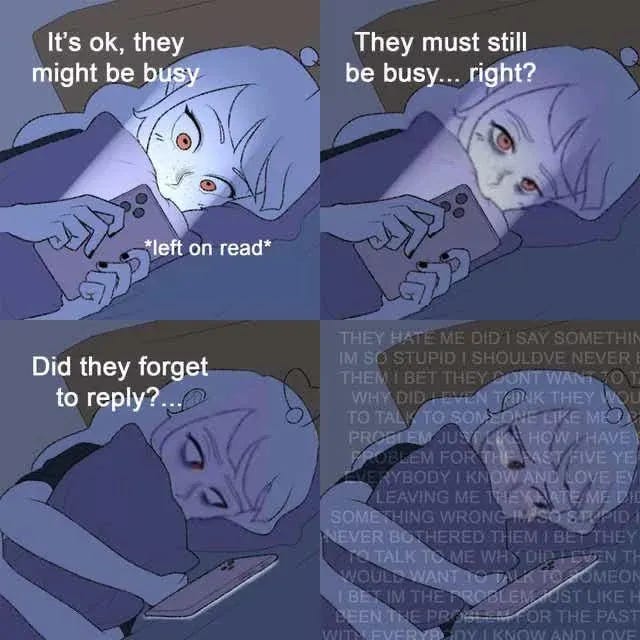
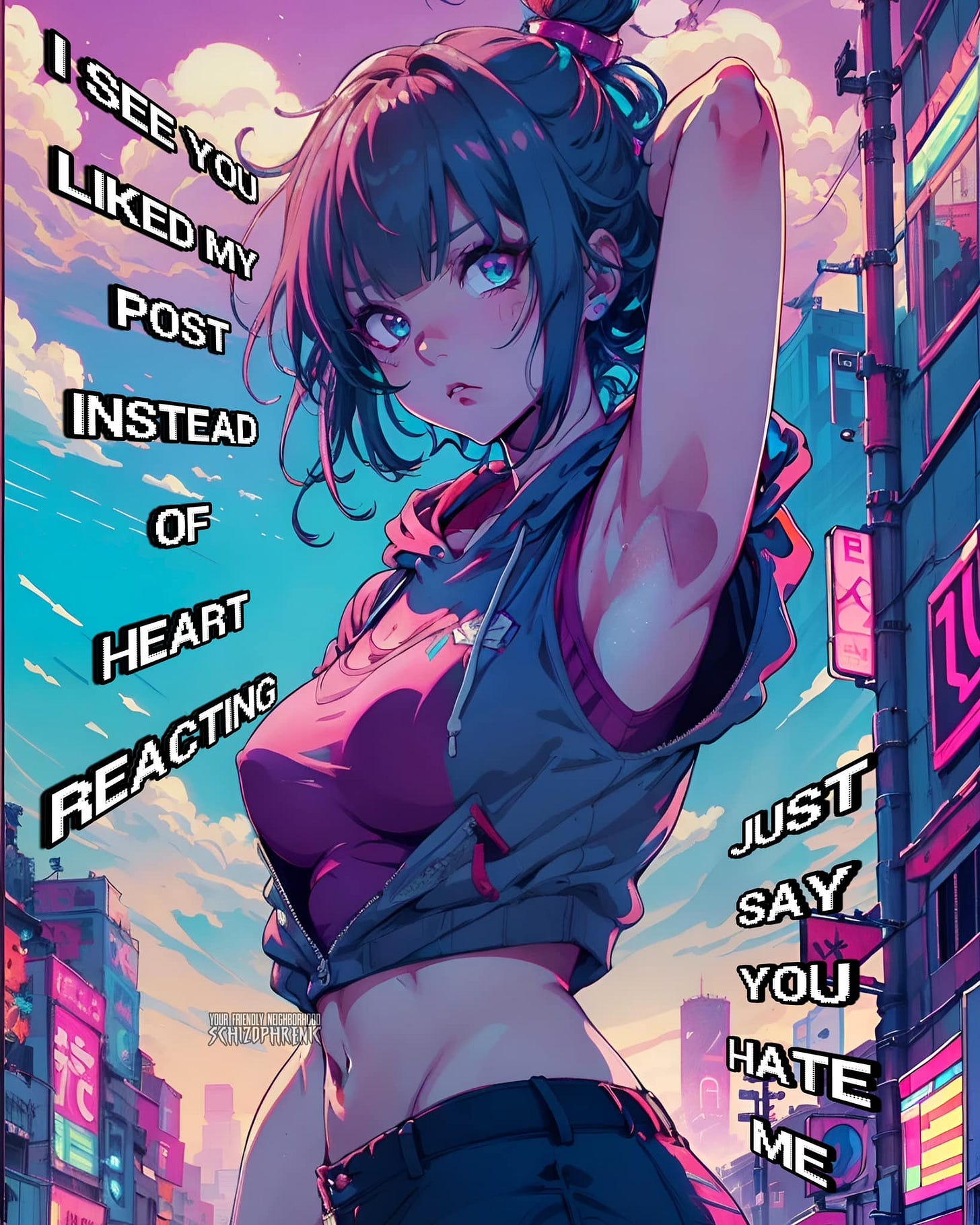
To make a long story short, I count myself among the ranks of people who only deal with social media “because I got shit to promote.” If it weren’t for Hermekate, I’d have been done with Facebook since about 2016. This is not hyperbole.
I’ve toyed with the idea of keeping social media to a minimum, but it’s proven rather impractical. There was a period when I pretty much ignored my personal account, but in order for a page to be worthwhile, you need to engage online pretty consistently as your page; a few posts daily at the minimum, otherwise there’s just about no point in the early stages due to how the algorithm works. Beyond that, online groups are among my only way to reach people in a more substantive way, such as in discussions, but I run into the opposite problem there: I would love to engage in nice, meaty discussions, but the cumulative impact of social media and short-form modes of information consumption like TikTok on people’s attention span means that usually, my bids to reach out to people in that way go ignored; people are good at quick, quippy little jabs and snipes in the comments section, but when I come along and drop a 3-4 paragraph essay in the comments, no one bothers reading it (or if they respond at all, it’s with a few words at most). I find this to be true even in the rare milieus where other people are actually prone to more substantive exchanges. I still manage to push the limits there.
It gets tiring, and for someone like me, it all-too-often feels like rejection. It becomes a regular trigger for BPD episodes.
And that’s when the Prince of Cups comes out: The storm of negative emotions festers and overwhelms until I finally decide to cut through it with ruthless, incisive intellectualizing. I let loose my inner misanthrope, and suddenly everyone seems like scum to me. I hate to admit it, but it’s true: Once I burn out on social media, I retreat in scorn. For a little while, I really can’t stand people anymore. That’s BPD splitting in action, wherein it can be difficult at times for people with Borderline to take a more moderate and nuanced view of people, and instead we paint them as either all good and amazing, or all bad and completely horrible.
At those times, if I try to stay online, the negative sentiments end up coming out in unintended, passive-aggressive ways that I later regret.
I feel like there is so much pressure to be fake and superficial on social media in order to get by that I would very often rather cut it out entirely.
But if I do that, I will reach exactly no one. Even if I shift my efforts into different ways of expressing my ideas, like writing a book (which is honestly a direction in which I’ll likely be moving eventually), I’d need to be online in order to effectively promote it.
Back on my birthday, I was in a place where the problem was clear, and my conclusion at the time was that I was quite amenable to accepting that my social struggles will simply prevent me from successfully developing Hermekate. I decided I might need to just let it go entirely. I was planning to finish this series (mainly for the sake of saying I’d followed through on at least one commitment to myself) and then ride off into the sunset.
And instead, I learned an important lesson:
That it’s totally valid to just step away for a few days for the sake of self-care. This is that black-and-white, all-or-nothing thinking that is characteristic of splitting: I can’t just stay off Facebook for a few days and return later; what if someone messages me or leaves a comment, thinking I’m actually available? So instead, I’ve only found relative peace by deciding to be “done” with Facebook altogether, and shutting down my accounts so that I’m unreachable.
I am well aware that with better personal boundaries, it would be totally reasonable for me to simply not frequent Facebook on a daily basis, and deal with any notifications whenever I get back. It’s just hard for me to do.
The volatile, champagne-like pressure chamber that is Air-of-Water…that explosive combination of negatively-polarized thought and emotion…is one of my major bugaboos. The Prince of Cups as it manifests within me is probably the single greatest obstacle to my finding success with Hermekate.
I’m not down for the count, though. Recognizing the obstacle is half the battle. Finding the balance to live with it and proceed carefully is the other half.
This is part of the Great Work: This is V.I.T.R.I.O.L. Everyone has different obstacles, and this happens to be mine. As far as the luck of the draw goes, one could very well argue that social hindrances are among one of the better problems to have, because addressing them is largely a matter of taking some risks, learning some new behaviors, and making some adjustments to one’s outlook.
Above all, I recognize that I need patience: I spent many years using ineffective coping mechanisms like drinking to overcome these obstacles artificially and come out of my shell, but they came with much more negative consequences.
It is to be expected that learning more comprehensive skills to overcome these problems will take some time. That’s how healing goes.


